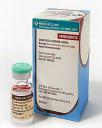 Commentary By: Marshall Fordyce, PGY-3
Commentary By: Marshall Fordyce, PGY-3
Now that the dust has settled in Texas and Virginia, let’s clarify the role of the human papilloma virus (HPV) vaccine in our clinics. An excellent article in last week’s JAMA by its Editor-In-Chief, Dr. Catherine DeAngelis, and Lawrence Gostin, JD, highlights how the recent push for compulsory vaccination – a significant step beyond CDC recommendations – defied precedent and threatened public confidence in our national vaccine policy. Now, after the tussle of aggressive pharmaceutical lobbying and the public outcry that followed, Texas’ executive order to make the HPV vaccine mandatory was overturned and Virginia’s was altered to include wide “opt-out” provisions. This debacle over mandatory vaccination notwithstanding, the importance of the new recommendations has a significant impact on our patients nonetheless.
Last June, when the FDA licensed the first HPV vaccine, the Advisory Committee on Immunization Practices (ACIP, a subset of the CDC) voted to recommend the vaccine to women 9-26 years old. Recent American Cancer Society (ACS) recommendations are very similar, but emphasize that the data best support girls 11 to 12 years old (“should be performed routinely”), and not so much for women 19-26 years old (“can neither be recommended or discouraged.”). These recommendations are given in addition current cervical cancer screening guidelines.
The vaccine, Gardasil, marketed by Merck, is a quadrivalent (covers the four most common and riskiest serotypes, 6, 11, 16, and 18), prophylactic vaccine, and is delivered in three shots (0, 2, and 6 months). It’s been tested in more than 11,000 women internationally, and has been found to be safe (only injection site pain) and effective (100% in preventing cancer and genital warts caused by the vaccine HPV types). Duration of protection has only been shown five years out. The full series costs $360, and cost-effectiveness studies have estimated the cost per quality-adjusted life year (QALY) to be about $20,000.
As the most common sexually transmitted infection, HPV is a very important public health problem. Only 82% of women in the U.S have had Pap screening, and cervical cancer disproportionately affects women with poor access to care, specifically black and Latina women, and recent immigrants. In this setting, 3,952 women died from cervical cancer in the U.S in 2002. Given the burden of disease and the apparent efficacy of the vaccine, it seems only appropriate that this major advance be made available as soon as possible. But mandatory vaccinations are another story entirely.
In the U.S., the argument for compulsory vaccination has been made more easily for highly infectious airborne diseases that cause immediate harm, like measles. In the case of the HPV vaccine, a new prophylactic vaccine with unknown long-term effects, it may be difficult for a clinician to justify to patients and their parents, let alone mandate it by law. What has truly injured the trust of our patients over the past six months has been the realization that Merck aggressively lobbied for the mandate in Texas and Virginia, raising the suspicion that the legislation was created in the interest of Merck’s profit rather than America’s health. DeAngelis’ article reminds us that our ability to protect the public with a national vaccination policy rests on an already fragile community relationship, and episodes such as this can go a long way to damage that – for HPV vaccination and vaccinations more generally.

One comment on “The HPV vaccine: Recommended in the U.S., but required in Virginia”
Relevant to Marshall’s post are three papers in the May 10th NEJM regarding HPV vaccine and cancerous lesions. Given the ongoing controversies with Merck (both on this issue and in connection with Vioxx), these papers should be read with careful attention to the paragraphs in small type at the end of the article: two of the three papers were wholly sponsored by Merck.
Comments are closed.